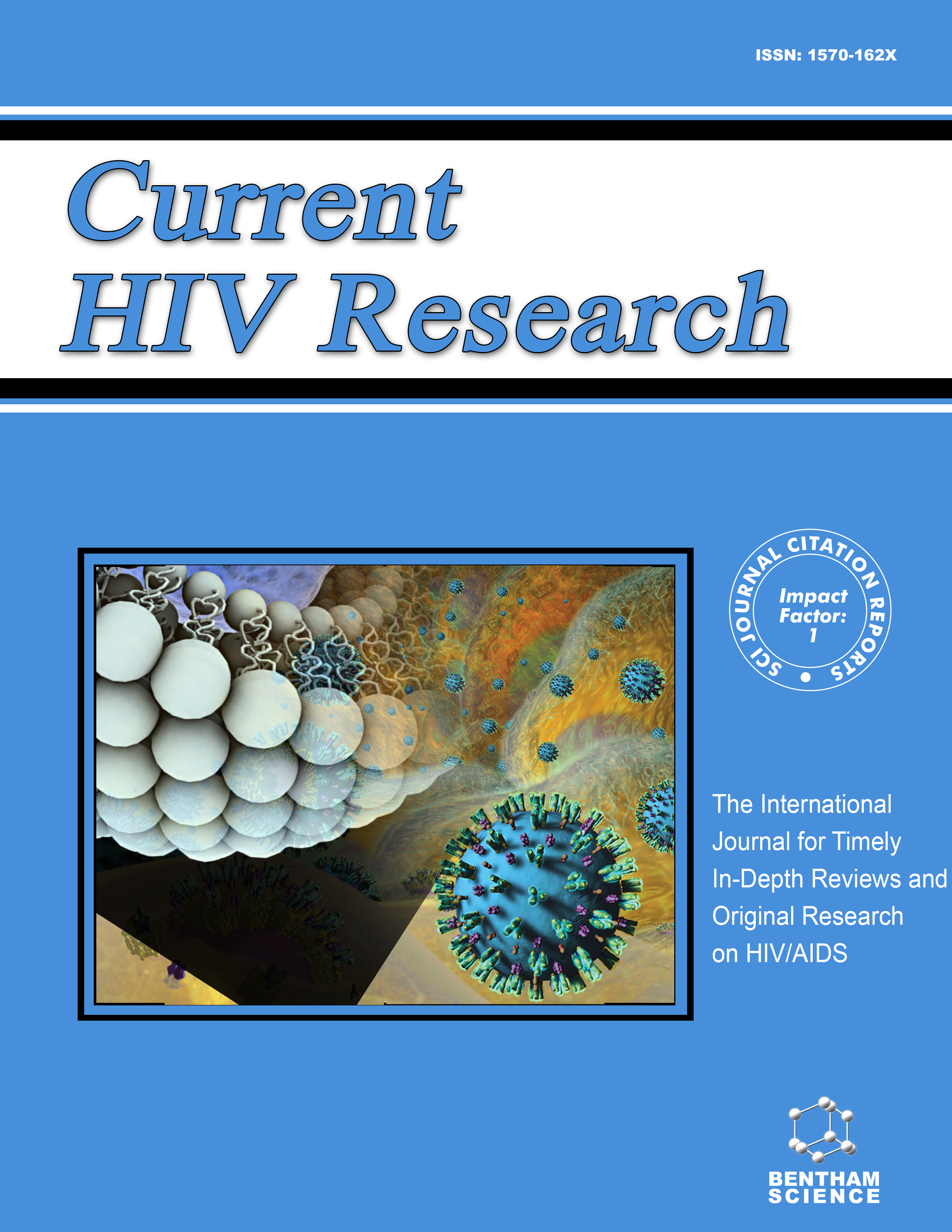- Home
- A-Z Publications
- Current HIV Research
- Previous Issues
- Volume 16, Issue 1, 2018
Current HIV Research - Volume 16, Issue 1, 2018
Volume 16, Issue 1, 2018
-
-
Probing Structural Variation and Dynamics in the HIV-1 Env Fusion Glycoprotein
More LessAuthors: James B. Munro and Kelly K. LeeBackground: Recent advances in structural characterization of the HIV envelope glycoprotein (Env) have provided a high-resolution glimpse of the architecture of this target for neutralizing antibodies and the machinery responsible for mediating receptor binding and membrane fusion. These structures primarily capture the detailed organization of the receptor-naive, prefusion conformation of Env, but under native solution co Read More
-
-
-
Evolution of Host Target Cell Specificity During HIV-1 Infection
More LessAuthors: Olivia D. Council and Sarah B. JosephBackground: Many details of HIV-1 molecular virology have been translated into lifesaving antiviral drugs. Yet, we have an incomplete understanding of the cells in which HIV-1 replicates in untreated individuals and persists in during antiretroviral therapy. Methods: In this review we discuss how viral entry phenotypes have been characterized and the insights they have revealed about the target cells supporting HIV-1 Read More
-
-
-
The Neutralizing Antibody Response to the HIV-1 Env Protein
More LessBackground: A vaccine able to elicit broadly neutralizing antibodies capable of blocking infection by global viruses has not been achieved, and remains a key public health challenge. Objective: During infection, a robust strain-specific neutralizing response develops in most people, but only a subset of infected people develop broadly neutralizing antibodies. Understanding how and why these broadly neutralizing antibodies dev Read More
-
-
-
The SIV Envelope Glycoprotein, Viral Tropism, and Pathogenesis: Novel Insights from Nonhuman Primate Models of AIDS
More LessBackground: Cellular tropism of human immunodeficiency virus (HIV-1) is closely linked to interactions between the viral envelope glycoprotein (Env) with CD4 and chemokine receptor family members, CCR5 and CXCR4. This interaction plays a key role in determining anatomic sites that are infected in vivo and the cascade of early and late events that result in chronic immune activation, immunosuppression and ultimately, AI Read More
-
-
-
SIV Coreceptor Specificity in Natural and Non-Natural Host Infection: Implications for Cell Targeting and Differential Outcomes from Infection
More LessAuthors: Katherine S. Wetzel, Sarah T.C. Elliott and Ronald G. CollmanPathogenic HIV-1 infection of humans and SIVmac infection of macaques are the result of zoonotic transfer of primate immunodeficiency viruses from their natural hosts into non-natural host species. Natural host infections do not result in pathogenesis despite high levels of virus replication, and evidence suggests that differences in anatomical location and specific subsets of CD4+ T cells infected may underlie distinct outco Read More
-
-
-
Association BetweenLTFPolymorphism and Risk of HIV-1 Transmission Among Zambian Seropositive Mothers
More LessAuthors: Luisa Zupin, Vania Polesello, Ludovica Segat, Anselmo J. Kamada, Louise Kuhn and Sergio CrovellaBackground: Lactoferrin is a member of the innate immune system acting in the first line of defence against pathogens, and it is known for its antibacterial, antifungal and antiviral activity, including HIV-1. Two polymorphisms, T29A and R47K, in the exon 1 region of the LTF gene (encoding for the lactoferrin protein) were previously described as able to influence the lactoferrin antimicrobial function. Objectives: LTF T29A and Read More
-
-
-
IL-10 Promoter -592 Polymorphism may Influence Susceptibility to HIV Infection in South Indian Population
More LessBackground: Genetic factors play an important role in the development of disease susceptibility or protection. Cytokine gene polymorphisms are reported to be associated with altered levels of cytokine production that can impact disease progression in HIV and TB. Objective: In this study, we studied IL-10 -592(C/A) and TGF-β -509 (C/T) promoter polymorphisms to understand their role in susceptibility or resistance to HIV and Read More
-
-
-
Comparative Genetic Variability in HIV-1 Subtype C vpuGene in Early Age Groups of Infants
More LessAuthors: Uma Sharma, Poonam Gupta, Sunil Gupta, S. Venkatesh and Mohammad HusainObjective: Identifying the genetic variability in vertically transmitted viruses in early infancy is important to understand the disease progression. Being important in HIV-1 disease pathogenesis, vpu gene, isolated from young infants was investigated to understand the viral characteristics. Method: Blood samples were obtained from 80 HIV-1 positive infants, categorized in two age groups; acute (<6 months) and early (>6-1 Read More
-
-
-
Investigating HIV-Human Interaction Networks to Unravel Pathogenic Mechanism for Drug Discovery: A Systems Biology Approach
More LessAuthors: Cheng-Wei Li and Bor-Sen ChenBackground: Two big issues in the study of pathogens are determining how pathogens infect hosts and how the host defends itself against infection. Therefore, investigating host-pathogen interactions is important for understanding pathogenicity and host defensive mechanisms and treating infections. Methods: In this study, we used omics data, including time-course data from high-throughput sequencing, real-time polymera Read More
-
Volumes & issues
-
Volume 23 (2025)
-
Volume 22 (2024)
-
Volume 21 (2023)
-
Volume 20 (2022)
-
Volume 19 (2021)
-
Volume 18 (2020)
-
Volume 17 (2019)
-
Volume 16 (2018)
-
Volume 15 (2017)
-
Volume 14 (2016)
-
Volume 13 (2015)
-
Volume 12 (2014)
-
Volume 11 (2013)
-
Volume 10 (2012)
-
Volume 9 (2011)
-
Volume 8 (2010)
-
Volume 7 (2009)
-
Volume 6 (2008)
-
Volume 5 (2007)
-
Volume 4 (2006)
-
Volume 3 (2005)
-
Volume 2 (2004)
-
Volume 1 (2003)
Most Read This Month
Article
content/journals/chr
Journal
10
5
false
en


